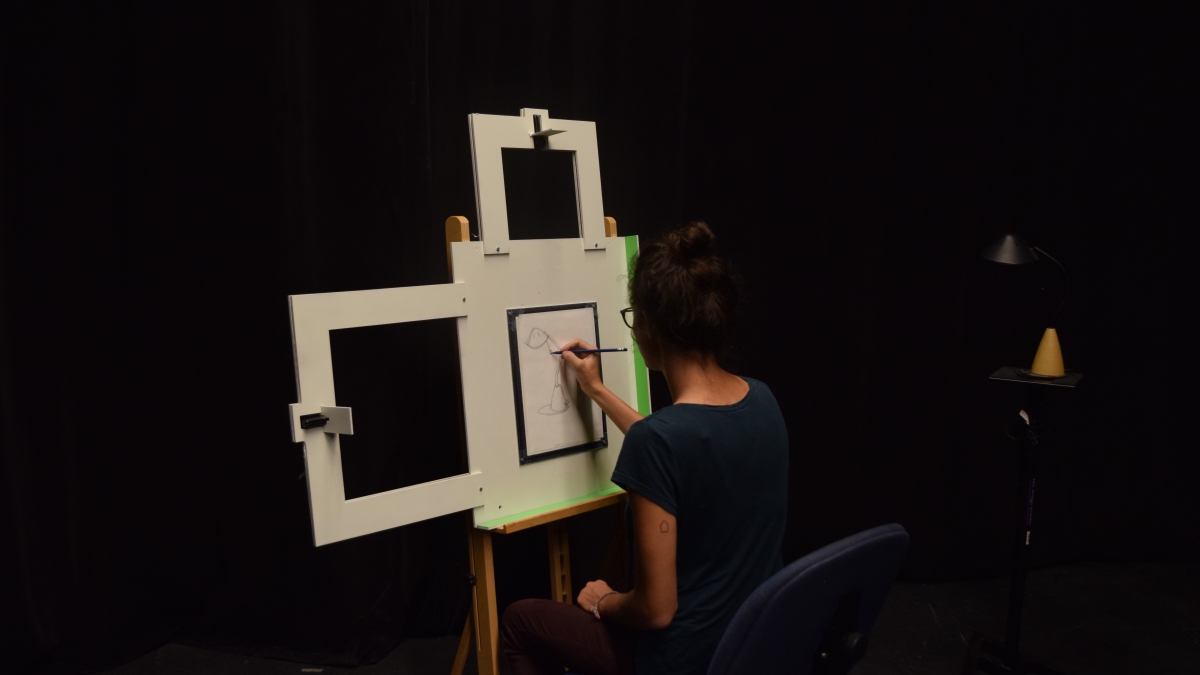ASU researchers to present at international conference on human-computer interaction

ASU researchers tracked and visualized the movement and pressure of an artist’s pencil on an easel.
A team of researchers from the School of Arts, Media and Engineering will present their work this week at the Association for Computing Machinery’s Conference on Human Factors in Computing, the premier international conference of human-computer interaction.
The team includes doctoral students Jennifer Weiler and Piyum Fernando and Assistant Professor Stacey Kuznetsov.
The team designed a research probe that unobtrusively tracks and visualizes the movement and pressure of an artist’s pencil on an easel. They conducted studies with artists and experienced art viewers to explore how sensing, visualizing and sharing these aspects of the creative process might shape art-making and -viewing experiences. In a paper titled “A Rough Sketch of the Freehand Drawing Process Blending the Line between Action and Artifact,” they explore future directions for human-computer interaction systems that sense and visualize aspects of the creative process and the social considerations for sharing and curating this intimate creative process.
All three researchers are traveling to Glasgow, Scotland, to present the paper at the 2019 ACM CHI conference.
The team is part of the School of Arts, Media and Engineering’s Social and Digital Systems transdisciplinary research collective. The SANDS group supports open participation in science and public engagement with scientific issues, and the research enables community knowledge sharing, artistic expressions and civic activism that emerge from amateur science work, according to Kuznetsov.

Researchers captured stills from video renderings of four different artists drawing the same object.
“We develop, deploy and study low-cost systems for creative science work in contexts such as hackspaces, art studios, citizen science communities, homes, schools or across social media platforms,” Kuznetsov said.
Visit sandsystems.org for more information about the research group.
More Science and technology

ASU planetary scientist to be inducted into the National Academy of Sciences
The National Academy of Sciences is inducting School of Earth and Space Exploration Director Meenakshi Wadhwa into the 2023 class…

Unlocking the potential of AI for homeland security
“Can we do what we're doing now cheaper, more efficiently, more effectively?” Adam Cox, director in the Office of Strategy and…

SpaceHACK highlights student solutions to environmental challenges, digital divide
By Adrianna Nine About 250 students from around the world convened online and at Arizona State University on March 22 for the…